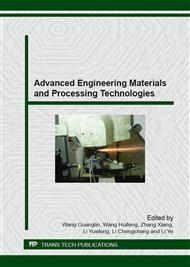p.308
p.314
p.320
p.326
p.335
p.341
p.347
p.353
p.359
Analysis of Durability Performance of Ionic Soil Stabilizer Improving Soil
Abstract:
In order to study the pavement performance of the soil that improved by ionic liquid soil stabilizer, the red-brown clay was concerned as the typical soil, mixed with the ionic soil stabilizer, the ordinary Portland cement and the hydrated lime, was tested to characterize its durability. The engineering classification of the typical soil was determined and the physical parameters of the ionic soil stabilizer was obtained, according to tests of the particle size analysis, crucial water content coefficient, organic matter content, PH, conductivity, plasma emission spectra, etc. In addition, the tensile strength, durability and shrinkage property were analyzed by split tests, freezing and thawing tests, fatigue tests and shrinkage tests. As a result, the typical soil was a kind of low liquid-limit clay, denoted by CL. The ionic soil stabilizer was a water soluble, high conductivity, strongly acidic sulfonated oleoresin. The ion exchange reaction between the soil and the ionic soil stabilizer begun after treating by the ionic soil stabilizer, and then the role of soil particles became stronger. Furthermore, the void between soil particles was decreased, the structure became closer, and then the tensile strength, durability and shrinkage property were improved. As mentioned above, the research provided theoretical foundation and practical support for using the ionic soil stabilizer in China's highway construction.
Info:
Periodical:
Pages:
335-340
Citation:
Online since:
October 2015
Authors:
Price:
Сopyright:
© 2016 Trans Tech Publications Ltd. All Rights Reserved
Share:
Citation:


